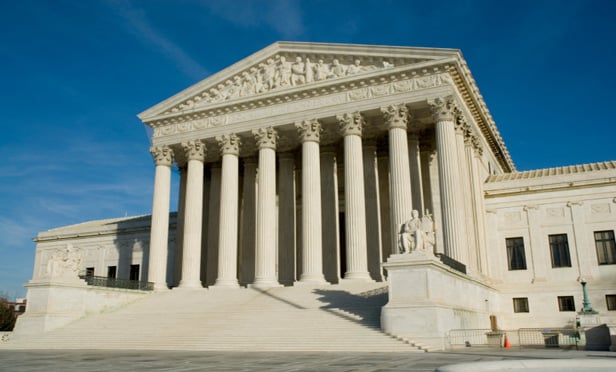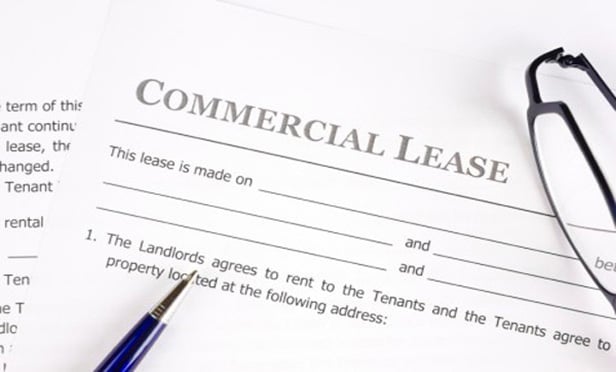Features

The Ripple Effect of Rejecting Trademark Licenses
<b><i>The First Circuit Widens the Controversy</b></i><p>In <i>In re Tempnology</i>, the First Circuit held that the debtor's rejection of a trademark license strips the nondebtor licensee of any right to continue to use the trademarks. In so doing, the court takes the same approach as the Fourth Circuit and rejects the approaches advocated by the Third and Seventh Circuits.
Features

SCOTUS: No Safe Harbor Protection Where Financial Institutions are Mere Intermediaries
The Supreme Court's decision and analysis are instructive for both bankruptcy and corporate practitioners, and will likely yield significant returns for estate beneficiaries.
Features

A Cautionary Tale for Lender Overreaching into Bankruptcy Remoteness
<b><i>In re Lexington Hospitality Group, LLC</b></i><p>Bankruptcy remote structures are often used to protect against the impact of default under a credit facility. A common mechanism is organizational documents requiring an outside director or member's vote to authorize a bankruptcy filing. However, the United States Bankruptcy Court for the Eastern District of Kentucky found that such a requirement implemented at the behest of a lender, among other bankruptcy restrictions, and where there was not true independence frustrated the important federal public policy of favoring fresh starts in bankruptcy.
Features

Offshore Restructuring Outlook
The first quarter of 2018 has seen the Dow and NASDAQ pushing through record highs, increasing consumer confidence in the U.S. and Europe. However, there are segments in the market that are expected to need continued restructuring work, both onshore and offshore through 2018, particularly: offshore oil and gas drillers; European and U.S. retail; and the highly leveraged Chinese real estate sector.
Features

What Retailers Can Learn from Recent Bankruptcies
Understanding the factors leading up to these bankruptcies, as well as the strategies used by retailers to emerge from bankruptcy, can give retailers significant knowledge about trends in consumer spending and how retailers can improve their overall positions going forward.
Features

Serving Two Masters: When 'Bankruptcy Remote' Meets Public Policy
<i><b>How Lenders to BREs Can Reduce the Risk of Debtor Bankruptcy Without Compromising Public Policies</b></i><p>Structured financing transactions, including those pertaining to commercial real estate, make extensive use of entities formed for the specific purpose of reducing the likelihood that assets will be involved in a potential bankruptcy proceeding. Known as “bankruptcy-remote entities,” or “BREs,” these entities are subject to structures and covenants in financing documents and their own formation documents, which are designed to reduce the likelihood that the BRE will file for bankruptcy protection.
Features

Anti-Forfeiture Statute Saves a Debtor's Exercise of Option to Renew Lease
In a recent decision, Bankruptcy Judge Christopher S. Sontchi addressed the question of whether a Chapter 11 debtor, the tenant under a commercial lease, could exercise an option to renew the lease during the bankruptcy proceedings, even though the debtor was in default under the lease and the lease specified that it could not be renewed if defaults existed at the time the option was exercised.
Features

Bankruptcy Venue Reform Bill Introduced
On Jan 8, 2018, Senators John Cornyn (R-TX) and Elizabeth Warren (D-MA) introduced the Bankruptcy Venue Reform Act of 2018, which is designed to prevent forum shopping in Chapter 11 bankruptcy cases, a practice that has resulted in a concentration of bankruptcy cases in a few districts.
Features

Recovering Administrative Claims in Chapter 9 Bankruptcy and Title III of PROMESA
Municipal bankruptcies under Chapter 9 of the Bankruptcy Code are rare. These cases are often filed to adjust bonded indebtedness and pension obligations. Congressional authorization for Puerto Rico and its instrumentalities to file for bankruptcy under the Puerto Rico Oversight, Management, and Economic Stability Act (PROMESA) was similarly out of concern for excessive bond debt and pensions.
Need Help?
- Prefer an IP authenticated environment? Request a transition or call 800-756-8993.
- Need other assistance? email Customer Service or call 1-877-256-2472.
MOST POPULAR STORIES
- The Article 8 Opt InThe Article 8 opt-in election adds an additional layer of complexity to the already labyrinthine rules governing perfection of security interests under the UCC. A lender that is unaware of the nuances created by the opt in (may find its security interest vulnerable to being primed by another party that has taken steps to perfect in a superior manner under the circumstances.Read More ›
- Strategy vs. Tactics: Two Sides of a Difficult CoinWith each successive large-scale cyber attack, it is slowly becoming clear that ransomware attacks are targeting the critical infrastructure of the most powerful country on the planet. Understanding the strategy, and tactics of our opponents, as well as the strategy and the tactics we implement as a response are vital to victory.Read More ›
- Clause & EffectNet-Profit Rights/Movies Based on TV Shows<br>Insurance/Contract-Breach Exclusion<br>Insurance/Copyright-Infringement CoverageRead More ›
- Rights and Obligations In Patent LicensesThe owner of a commercially successful patent may have competing desires. On one hand, the patent owner wants to protect the patent and secure its maximum benefit; on the other hand, the patent owner wants to avoid enforcement litigation with competitors because it is expensive and puts the patent at risk.Read More ›
- Foreseeability as a Bar to Proof of Patent InfringementThe doctrine of equivalents is a rule of equity adopted more than 150 years ago by the U.S. Supreme Court. Prosecution history estoppel is a rule of equity that controls access to the doctrine. In May 2002, the Court was called upon to revisit the doctrine and the estoppel rule in <i>Festo Corp. v. Shoketsu Kinzoku Kogyo Kabushiki Co. Ltd.</i> Ultimately the Court reaffirmed the doctrine and expanded the estoppel rule, but not without inciting heated debate over the Court's rationale — especially since it included a new and controversial foreseeability test in its analysis for estoppel.Read More ›

